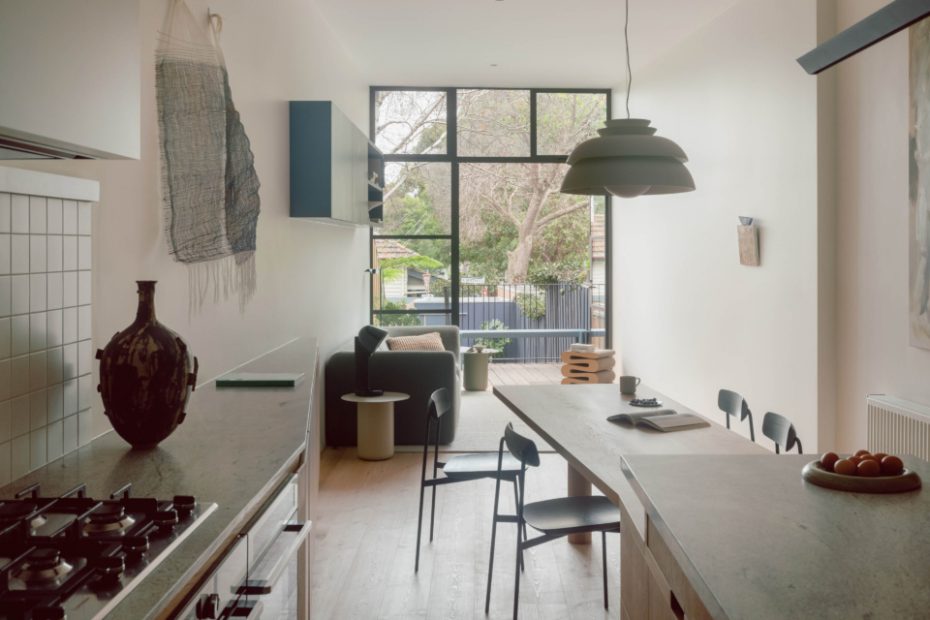How This Terrace Cleverly Maximises Space On A Narrow Block
Architecture
The Victorian terrace has been reimagined for modern family life. Sequence tables by Coco Flip. Wiggle stool from Living Edge. Linear Bench by Muuto.
The charming restored exterior.
A long custom island bench was designed to include an adjoining dining table. Bowl and vase from Pepite. Artwork on left by Eleanor Louise Butt.
Aalto stools by Nord. Vase in back corner from Pepite. Kettle from Designstuff.
A desk upstairs overlooks the courtyard. Standard Chair by Jean Prouve. Bellhop table lamp by Flos.
The bench cranks at its midpoint, emphasising the irregular angles of the site.
The rear red-brick facade features two matching windows, with retractable eaves and an awning by Shadefactor.
The bathroom.
The curved streets in South Melbourne, lined with charming terraces, are inspired by the traditional Georgian crescent developments of London.
As a result, many of the neighbourhood’s homes feature wedge-shaped sites and pokey floor plans that lack natural light — something the owners of this Victorian wanted to address in a renovation by Healy Ryan.
The clients’ brief focused on creating a more functional and comfortable house for their growing family, while maintaining the home’s existing character of its white facade with latticework iron detailing.
‘The site is extremely narrow by normal house standards: 4.7 metres at the front, tapering down to 1.6 metres at the rear of the property,’ Healy Ryan Architects director Tom Healy.
‘Added to this, the house is attached on both sides and slopes down from front to back, effectively making the internal spaces even darker.
‘The tightness of the site meant that we had to design very efficient spaces. The allocation of each millimetre was considered — should it be given to the passageway or the custom dining table?’
They landed on a few key moves. The existing split levels were consolidated onto a single floor, removing the steps to allow more westerly light, while the more simplified layout offers a greater sense of space inside.
‘We also forfeited some of the upper floor to allow a shaft to bring light down into the kitchen,’ Tom notes of the upstairs, containing the three bedrooms.
The main living, kitchen and dining areas now form a singular space at the heart of the home, shaped around a central island bench complete with an adjoining timber dining table that follows the angled nature of the site.
Steps lead down to a courtyard stretching to the boundary line, beside a multi-purpose study space and bathroom below the ground floor.
Steel-framed windows now span the full height of the ground floor to capture more sunlight, but this new opening also meant the rear required some shade during the hot summer months.
‘A red steel eave sits atop the steel-framed doors, and a matching retractable awning nestles neatly into the red brick facade, creating a crafted but monolithic impression,’ Tom adds.
In contrast to the contemporary interior details, the home’s existing heritage elements — including the balcony, facade, and roof — have all been beautifully restored.
Altogether, it makes for a striking twist on the classic terrace!
